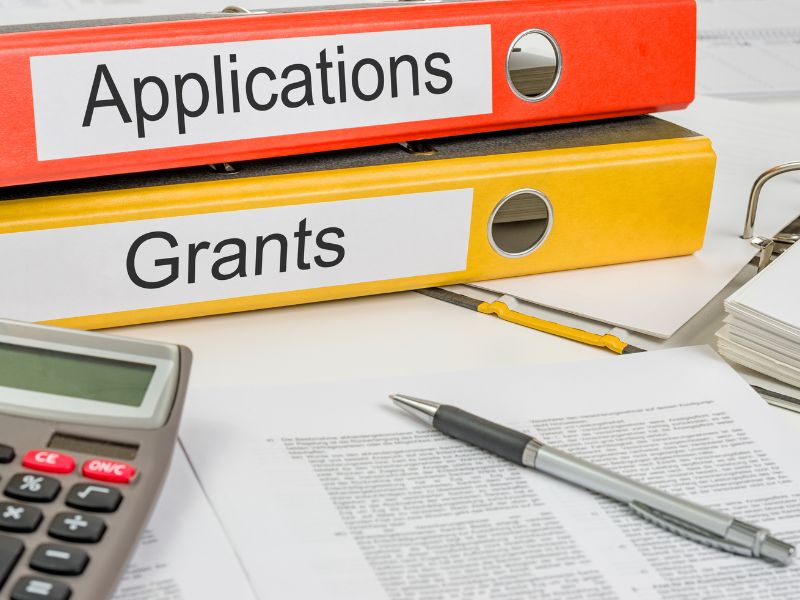Strong grant writing skills can make the difference between a compelling proposal and one that gets overlooked. Whether you’re new to the grant writing process or looking to sharpen your approach, there are clear, actionable ways to improve how you communicate your mission, align with funder priorities, and demonstrate impact.
Join our nonprofit software consultants from Capital Business Solutions as we explore 11 practical strategies to help you write stronger, more effective grant proposals that get results.
What is Grant Writing?
Grant writing is the process of preparing proposals to request funding from foundations, government agencies, or other organizations. It involves clearly communicating your nonprofit organization’s mission, goals, and needs to demonstrate why your program is a strong match for the funder’s priorities.
Characteristics of Effective Grant Writing
Clear and persuasive storytelling
Alignment with the granting organization’s mission
Well-defined goals and measurable outcomes
Accurate, detailed budgeting
Professional tone and formatting
- Compliance with all application requirements
1. Review the Guidelines Carefully
Before you write a single word of your proposal, our first tip for successful grant writing is to take the time needed to read the grant application guidelines thoroughly. Many proposals are rejected simply because they didn’t follow basic instructions—such as page limits, formatting rules, or required documents. Additionally, pay close attention to eligibility requirements, deadlines, and evaluation criteria.
2. Do Your Research
When it comes to grant writing tips for nonprofits, understanding the funder is just as important as understanding your own organization’s needs. Research the mission, values, and funding source’s history to tailor your proposal accordingly. Look at previously awarded projects and take note of common themes or priorities. This alignment builds trust and improves the likelihood of grant writers getting a successful outcome.
3. Leverage Past Proposals
Grant writers do not need to start from scratch if they don’t have to. When working on funding projects, review previous grant proposals—both successful and unsuccessful ones. Reuse or adapt language when appropriate, especially for mission statements, organizational descriptions, and outcomes.
Keeping a grant writing toolkit or template library can speed up the process of applying for funding opportunities while ensuring consistency in your messaging. Just make sure each new grant proposal is updated and customized for its proposed project and audience.
4. Write an Outline
When you write successful grant proposals, it’s important to stay organized. Starting with an outline keeps your proposal focused and organized from the start. Map out the required sections—such as need statement, goals, methods, and your budget narrative—and jot down key points under each to capture your reader’s attention. This framework ensures that you don’t miss important elements and helps you write with purpose. Outlining also makes it easier to assign different sections to team members, if multiple contributors are involved.
5. Simplify to Avoid a Lengthy Proposal
Grant reviewers often have limited time and many proposals to read, so clarity is key. Avoid jargon, overly complex sentences, and flowery language when you write proposals. Instead, use plain language that gets to the point and communicates your impact clearly to secure funding sources. Break up large blocks of text with headings, bullet points, or tables when possible. A simplified proposal is not a less intelligent one—it’s more accessible and more persuasive.
Follow these simple grant writing essentials:
Avoid vague words and empty phrases, such as “nearly,” “almost,” “about,” or “roughly,” etc.
Don’t use jargon, technical language, acronyms, or clichés
Don’t use words you wouldn’t use in normal, everyday conversation
Use short words, short sentences, and short paragraphs to help readers follow along and stay engaged
Use charts and graphs or other visuals to help explain your points, as these also help break up text and make documents easier to read
6. Use Compelling, Mission-Driven Language
Anyone working in the nonprofit world knows first hand that a successful grant writing program should not only inform but also inspire. Use language that reflects your passion and commitment to your mission, and help the reviewer feel emotionally connected to the work you do. Describe the challenges your community faces and the transformative impact your nonprofit organization can make with the right financial support.
7. Highlight Measurable Outcomes
Funders want to see exactly how their investment will make a difference. Clearly define what success looks like and how you plan to measure it. Whether it’s the number of individuals served, improvement percentages, or community engagement metrics, provide realistic and quantifiable outcomes. Most nonprofit management teams will include this evidence to support their grant application.
8. Organize the Budget
Your budget tells a story just as much as your narrative does. A well-organized, realistic budget shows that you’ve thought through the logistics and are capable of managing the funds effectively if named the award recipient. Include detailed line items and ensure they align with your project goals and timeline. If matching funds or in-kind contributions are required, clearly indicate where those will come from.
To make your budget easier to read and understand, consider these grant writing tips:
Use clear and concise verbiage to explain how much each activity will cost, and how to relates to the overall project
Convey realistic expectations of how much items and activities may cost
Show detailed sources of income and expenses for the life of the project
Review the numbers to make they add up and make sense
9. Be Creative
Creativity doesn’t mean breaking the rules—it means presenting your ideas in a memorable and engaging way within the structure requested in the funding opportunity announcement. Find fresh ways to frame your mission, describe your programs, or convey your community’s need. Consider including visuals like graphs, infographics, photos, or additional attachments if permitted. Think beyond the standard and develop a grant proposal that showcases the unique qualities making your organization stand out.
10. Proofread Everything
Typos, grammatical errors, and inconsistencies can distract from even the strongest grant proposal. After completing your draft, take a break before reviewing it with fresh eyes. Read it aloud to catch awkward phrasing, ensure the proposal is written in active voice, and ensure the narrative flows smoothly. If possible, have a colleague proofread it as well—an outside perspective can spot things you may overlook.
11. Use Nonprofit Accounting Software Resources
Winning a grant is just the beginning—success also depends on how well your organization manages those granted funds. Nonprofit accounting tools like MIP Fund Accounting help streamline financial tracking, ensure compliance with grant requirements, and build funder trust. With features like fund segmentation, automated reporting, and real-time budget tracking, grant management software allows nonprofits to manage multiple grants with transparency and accuracy.
Strong financial systems not only support day-to-day operations but also strengthen future proposals with reliable data and clear reporting. Capital Business Solutions offers expert software training and consulting in MIP Fund Accounting to help nonprofit teams maximize their resources and stay grant-ready.
Improve Nonprofit Grant Funding Today
Simplify and organize your grant management process with Capital Business Solutions. We help nonprofit organizations increase grant funding, stay organized, and measure success through our software training services.
Contact us today to learn more by calling us at (888) 249-6008 or filling out our online contact form to get started.
Contact Form
We would love to hear from you! Please fill out this form and we will get back to you shortly.



